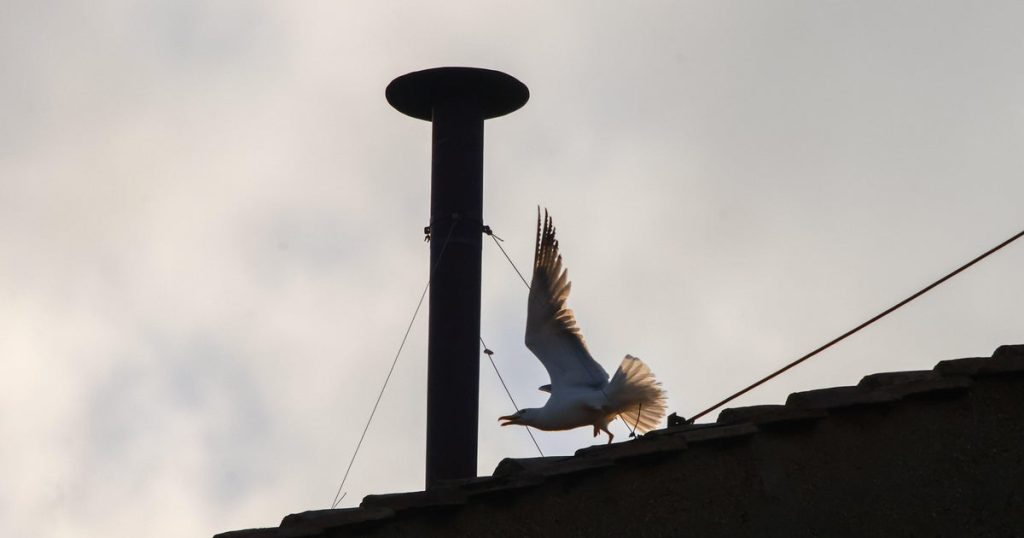On Wednesday, black smoke billowing from the chimney of the Sistine Chapel signified that no new pope has been elected on the first ballot. This traditional method was employed as cardinal electors continue their deliberations, locked away from the outside world. The smoke signals, which inform the global Catholic community of the papal election’s outcome, remain a significant and historical aspect of the conclave process.
| Article Subheadings |
|---|
| 1) Understanding the Significance of Smoke |
| 2) The Usage of Smoke Signals in History |
| 3) The Mechanics of Producing Smoke |
| 4) Conclave Dynamics: First Ballot Outcomes |
| 5) Historical Context of Papal Elections |
Understanding the Significance of Smoke
The smoke signal tradition during papal elections serves as an essential communication tool for the Catholic Church, which encompasses approximately 1.4 billion followers worldwide. The black smoke rising from the Sistine Chapel signifies that the cardinal electors have failed to elect a new pope on the initial ballot. Conversely, white smoke signifies that a new pope has been chosen. This practice, rooted in long-standing traditions, symbolizes the Church’s desire for clarity and transparency in the election process while maintaining the solemnity associated with selecting the pontiff.
The Usage of Smoke Signals in History
Smoke signals have been a means of distant communication for thousands of years. According to Clare Johnson, a professor of Liturgical Studies and Sacramental Theology, indigenous cultures have employed refined techniques to convey specific messages through smoke. These can include variations in smoke color, which have been used both as a signaling mechanism and a form of ceremonial expression. Historically, the use of smoke to announce the outcomes of crucial decisions, such as the election of a new leader, has been widely documented. The Catholic Church adopted this ancient communication method during conclaves to convey vital news to the faithful during moments of significant transition.
The Mechanics of Producing Smoke
In the past, the conclave faced challenges in consistently producing the correct color of smoke, notably in 1958 when the smoke transitioned from white to black, leading to public confusion. To mitigate this, modern conclave procedures now incorporate chemical additives to achieve the desired visual effect. The methods have evolved since the inception of this process, with materials like potassium perchlorate, anthracene, and sulfur being burned with ballots to create the black smoke, while a distinct mixture of potassium chlorate, lactose, and chloroform resin is used to generate white smoke. This chemical approach ensures that the messages communicated via smoke are clear and unmistakable.
Conclave Dynamics: First Ballot Outcomes
It is indeed feasible for a new pope to be elected on the first ballot; however, in recent elections, achieving the required two-thirds majority has proven difficult. The current practices surrounding conclave elections involve intense deliberations and discussions among the cardinal electors. The shortest conclave on record occurred in 1503, taking merely ten hours to elect Pope Pius III. Historically, the average time to realize a new pope has varied, with recent electors, including the late Pope Francis, being appointed within a span of just two days across five ballots. On the other hand, the longest conclave lasted nearly three years, culminating in the election of Pope Gregory X after extensive discussions.
Historical Context of Papal Elections
Papal elections have evolved significantly over the centuries, influenced by changing sociopolitical dynamics within the Church and broader society. The first documented utilization of smoke signals arose from the necessity to convey essential decisions swiftly and effectively during critical moments of transition. The Church’s decision to formalize the vote by burning not just ballots but also all related papers—an adjustment mandated by Pope Pius X in 1904—has enhanced the clarity of election outcomes, producing more pronounced white smoke for successful ballots. This evolution of practices illustrates the Church’s commitment to transparency and engagement with its global congregation while adhering to cherished traditions.
| No. | Key Points |
|---|---|
| 1 | Black smoke indicates no new pope has been elected; white smoke means a new leader has emerged. |
| 2 | Smoke signals serve as a historic communication method, dating back millennia. |
| 3 | Modern methods utilize chemicals to ensure the correct smoke color is produced reliably. |
| 4 | Recent elections generally require more than one ballot to determine a new pope. |
| 5 | Papal elections have evolved over time, influenced by both internal Church dynamics and societal changes. |
Summary
The use of smoke signals in the papal election process exemplifies a blend of ancient tradition and modern necessity, allowing the Catholic Church to maintain its historical roots while adapting to contemporary communication methods. As the conclave continues to elect a new leader, the signal of black smoke serves as a reminder of the anticipation and hope that accompanies the selection of a new pope. The intricacies involved in the process reflect the Church’s enduring traditions and the collective desire for unity among its global congregation.
Frequently Asked Questions
Question: Why is black smoke used in papal elections?
Black smoke is produced when the cardinal electors have not reached a decision on the election of a new pope, indicating to the public that the process is ongoing.
Question: How has the method of producing smoke changed over time?
The tradition has evolved to include modern chemical additives that ensure the smoke produced is clearly distinguishable in color, reducing past confusion associated with the election outcomes.
Question: What does it mean when white smoke is seen from the Sistine Chapel?
White smoke indicates that a new pope has been elected, signaling to the faithful globally that the conclave has concluded successfully.
